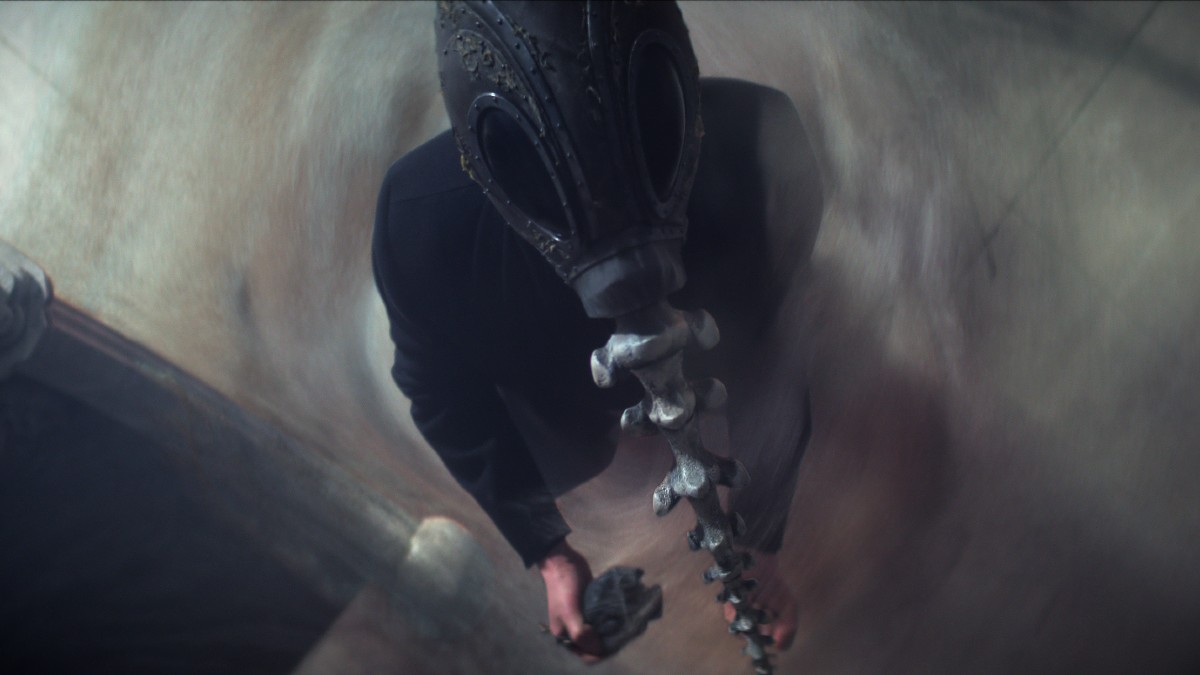This The Sandman review contains NO SPOILERS and is based on all 10 episodes of the first season of the show.
After decades of failed or blocked film adaptations of Neil Gaiman’s The Sandman, Netflix has finally broken through with a new 10-episode series, released on Aug. 5.
And it was all worth the wait. The Sandman is spectacular.
The series, adapted for television by Allan Heinberg, David Goyer, and Gaiman himself, follows Dream of the Endless as he is captured by a human warlock and held in captivity for 100 years. He escapes captivity and returns to his realm, The Dreaming, to rebuild and reorient himself, and that process leads to personal growth and deeper relationships with his subjects and his siblings.
Adapting a comic as visually striking and inventive as The Sandman was always going to be complicated. The list of artists who worked on the comics is a laundry list of the most influential and inimitable artists of the 1990s comics scene – Dave McKean, Sam Keith, Colleen Doran, Chris Bachalo, Kelley Jones, Jill Thompson, Mark Buckingham, Bryan Talbot, and more. To try and translate that level of storytelling talent to a completely different medium would require the creators to have as deep and critical an understanding of that new medium as the geniuses who drew the comic did of theirs.
Allan Heinberg and David Goyer, working with an older, wiser, and now-TV veteran Gaiman, did just that.
To understand exactly why the television adaptation excels so much, one must know what the comics did successfully and how the show used that to its advantage. The comics were full of iconic character designs, and those characters were often placed in fantastical situations that traditional television could not afford to render effectively or convincingly.
The show clearly spent the money to render these situations well. There is exactly one moment in the entire series where the sets took me out of the moment (they reused an old one and didn’t do enough to change its appearance). Otherwise even the scenes that look like they just picked a random quarry to shoot in were done so with a later story beat in mind. The show captures the dream logic of Morpheus’ realm beautifully, with everything from Morpheus’s giant hand snatching a rice paddy intersection out of one person’s dream, to the unintelligible letters on road signs in another.
As for capturing the iconic characters, the casting for this show is superlative. Tom Sturridge (Irma Vep) is stunning as Morpheus, the King of Dreams, and Boyd Holbrook (Logan) is his primary sort-of-antagonist of the show, the tooth-eyed escaped nightmare The Corinthian. Both Morpheus and The Corinthian are given more material, more interiority than their comics counterparts, and Sturridge and Holbrook do an incredible job conveying those emotions through serious restrictions: Holbrook has to act without his eyes, and Sturridge has the mopey goth vibe of Morpheus to maintain from the comics.
That mopey goth vibe doesn’t end up being a restriction. What Sturridge does is turn expectations on their head: he gives a subtle, layered performance as Morpheus, with flashes of acting against type – every smirk, every grin, every eye twinkle he gives shines through. In fact, Sturridge’s performance is the place where the difference between the show and the comic is most stark.
Comics can be bright and complicated and staggeringly beautiful in a way no other medium can, but only the absolute best of them can do subtle movement better than film or television. Comics imply movement between panels – you can see Morpheus twinkling and smiling on a page turn, but you can’t see the smirk develop anywhere but in the progression that exists in your head as you read. What Sturridge does is milk that progression. You see the hurt in his squint of eyes, his uncertainty in the way his shoulders stoop for a moment, his nobility in the way he gathers them back up. It is one of my favorite performances in a TV show in some time, and I’d hope it earns him some awards.
The supporting cast is every bit as outstanding as the leads. David Thewlis (Wonder Woman) is a creepy nightmare of a person as John Dee; Kirby Howell-Baptiste (The Good Place) is magnetically perfect as Dream’s sister Death; Gwendoline Christie (Game of Thrones) quietly seethes as Lucifer Morningstar, Lord of Hell; and Stephen Fry (The Hitchhiker’s Guide to the Galaxy) is a highlight of the back half of the show as Gilbert.
But ultimately, The Sandman belongs to Sturridge, Holbrook, and the showrunner team. They deserve massive critical acclaim for their accomplishment. And a season 2 renewal as soon as possible.
All 10 episodes of The Sandman are available to stream on Netflix now.
